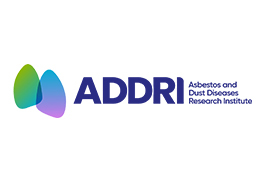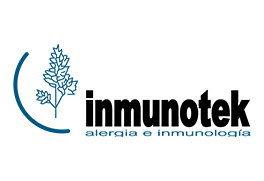Industry Innovators
Sunday , 23 March 2025

Our response to the national silicosis crisis
Time: 12.10 - 12.30 pm Theatrette 1 (Exhibition Hall)
Synopsis: Join us for a session which addresses the impact of silica and other dust exposures on Australian workers, many of whom may be your patients. With alarming predictions regarding the total numbers of cases of silicosis and silica-related diseases in the future, including lung cancer, diffuse dust related fibrosis, autoimmune disease and chronic obstructive pulmonary disease, this is a critical public health concern.
Australians are desperately searching for answers – with over 26,000 monthly Google searches related to silicosis and health concerns, the need for clear, accessible information has never been more urgent. At the same time, respiratory physicians need clear and careful information about how to help.
This session will introduce Australia's Silicosis Support Hub (silicosis.org.au), a one-stop national resource for patients and carers. Learn how this platform offers accessible, reliable information on protecting against silica exposure, assessing risks, navigating healthcare options, and understanding legal and financial rights. This could be a valuable resource for your patients.
In this session we will also introduce the first Australian statewide Occupational Respiratory Disease Multidisciplinary Team Meeting , launching soon in NSW in collaboration with Concord Repatriation General Hospital. The online MDT will provide a free resource for respiratory physicians in diagnosing and helping patients who have had occupational dust exposure. It will also assist physicians with the administrative issues relating to the new mandatory notification by physicians to the new National Occupational Respiratory Disease Registry (NORDR).
Occupational lung diseases are increasingly being recognised in NSW and making a diagnosis of work-related lung disease can be complex and time consuming. Currently, these patients may be reviewed in an interstitial lung disease multidisciplinary team meeting (ILD-MDT), but not all respiratory physicians have access to these, particularly those working in rural & remote areas where occupational exposures are common. The new Occ MDT is not designed to replace the ILD MDTs, but to supplement them by providing access for all and advice on difficult cases. It will bring subspecialty expertise from a multidisciplinary team (occupational respiratory physicians, occupational hygienists, occupational respiratory radiologists, physiologists and nurses) to this unique population, as well as enable links to essential support services. ADDRI hopes that these initiatives will provide practical solutions and assist both patients and physicians in dealing with dust related diseases.
Presented by Professor Deborah Yates, leading Respiratory Physician, and A/Professor Anthony Linton, ADDRI Academic and Research Director, this session will explore the patient journey, the role of the Silicosis Support Hub, and the goals of the upcoming NSW State-wide meeting to ensure comprehensive patient assessment and care.

Is There More to Their Cough? How Phenotype and Endotype Mapping Personalises Asthma Care.
Time: 12.10 - 12.35 pm Theatrette 2 (Exhibition Hall)
Speaker: Woo-Jung Song, MD, PhD.
Professor, Department of Allergy and Clinical Immunology. Allergy, Asthma & COPD Centre. Airway Sensation & Cough Research Laboratory. Asan Medical Centre, University of Ulsan College of Medicine.
Synopsis: This session explores the evolving landscape of chronic cough phenotyping, the utility of FeNO in personalized management, and the challenges of translating these insights into clinical practice.
Chronic cough remains a complex and often refractory condition, necessitating a paradigm shift in classification and management. Traditionally categorized based on symptoms or etiology, emerging evidence supports the concept of treatable traits, particularly cough hypersensitivity and airway inflammation in adults.
T2 inflammation has been identified as a key treatable trait in chronic cough, with fractional exhaled nitric oxide (FeNO) serving as a valuable biomarker for phenotyping and guiding treatment decisions. Observational studies suggest that elevated FeNO levels can support the diagnosis of asthmatic cough.
Clinical evidence indicates that empirical inhaled corticosteroid (ICS) treatment provides modest therapeutic benefits, with greater efficacy in patients with elevated FeNO. Recent prospective studies have shown significant improvements in patient-reported outcomes following ICS therapy in FeNO-high chronic cough populations. Despite these advancements, knowledge gaps remain regarding FeNO’s optimal threshold levels, its role in repeated monitoring, and its integration into chronic cough clinical guidelines.

Step inside the consult room: A Case Study on the Cardiovascular Impact of RSV infection in a Patient with Comorbidities
Time: 12.35 - 12.55 pm Theatrette 1 (Exhibition Hall)
Speaker: Prof Tim Tang (Consultant Cardiologist)
Synopsis: Join internationally renowned cardiologist Professor Timothy Tan in the consult room as he presents a compelling case study on the associated impact of respiratory syncytial virus (RSV) infection on cardiovascular outcomes in an older adult patient with comorbidities including Chronic Obstructive Pulmonary Disease (COPD), diabetes, and hypertension. This session will explore the complex interplay between respiratory infections, such as RSV, and cardiovascular events, emphasising the critical importance for respiratory physicians and nurses to understand these interactions. The session will also focus on the prevention of RSV-related lower respiratory tract disease in adults aged 60 years and older through vaccination.

Big change in little airways: establishing small airways disease as a treatable trait with oscillometry
Time: 12.35 - 12.55 pm Theatrette 2 (Exhibition Hall)
Speaker: Dr Li Ping Chung, Prof Claude Farah
Synopsis: Small airways disease (SAD) is a fundamental concept in both asthma and COPD, unequivocally linked to risk of exacerbations, symptom control, airway hyperresponsiveness, spirometric abnormalities and inflammation. Furthermore, SAD is evident across all severities in both obstructive diseases, often present prior to spirometric alterations and amplified in more severe disease.
Combining validated small airways measures such as oscillometry with the current gold standard spirometry is an innovative approach in obtaining valuable information which can improve disease diagnosis, management and identify phenotypes missed by current tests alone.
This session will aim to present developments in research on SAD from Australia.
Dr Li Ping Chung will share her groundbreaking study examining SAD in a severe asthma clinic using spirometry plus impulse oscillometry that demonstrated SAD was highly prevalent and predictive of exacerbations and symptoms.
Professor Claude Farah will present the results of a world first Australian led Delphi study to establish consensus oscillometry values. This will help to simplify clinical interpretation of the results for clinicians in practice.
Monday, 24 March 2025

Hypersensitivity Pneumonitis: A Case-Based Guide to Diagnosis and Management
Time: 12.35 - 12.55 pm Theatrette 1 (Exhibition Hall)
Speaker: A/Prof Lauren Troy
Synopsis: The recent TSANZ diagnosis and management of hypersensitivity pneumonitis position statement provides an up-to-date summary of the evidence relating to the diagnosis and management of HP in adults. This educational session will feature an expert in HP, and an author of the position statement, discussing the diagnostic and management process for HP. The session will include a case-based discussion, and aid in the prompt diagnosis and optimal management of hypersensitivity pneumonitis.

Small airway response to single inhaler triple therapy in asthma
Time: 12.35 - 12.55 pm Theatrette 2 (Exhibition Hall)
Speaker: Prof Grace Parraga (Western University, London, Canada and Robarts Research Institute)
Facilitator: Prof Greg King
Synopsis: Asthma isn’t just about the large airways—small airway dysfunction is a major player, driving airway resistance, ventilation inhomogeneities, and airflow limitation that can make asthma harder to control.
But what if we could see these changes in real-time?
Join us for a fascinating session with our distinguished guest, Prof. Grace Parraga (Canada), as she unveils groundbreaking research using ¹²⁹Xe MRI imaging biomarkers and oscillometry. Discover how these cutting-edge techniques reveal improvements in ventilation after treatment with single-inhaler triple therapy—and what this means for the future of asthma management.
Key Dates
ABSTRACT SUBMISSION OPENS
15 July 2024
REGISTRATION OPENS
1 October 2024
ABSTRACT SUBMISSION CLOSES
8 October 2024
EARLYBIRD DEADLINE
31 January 2025
